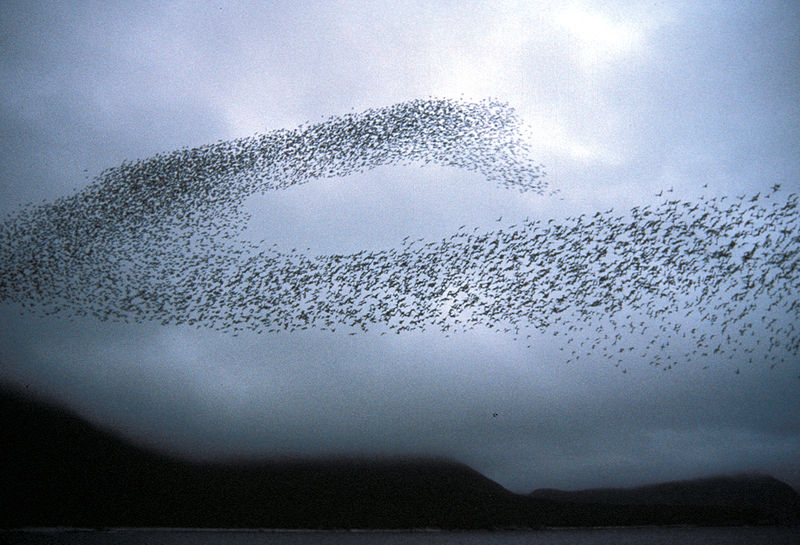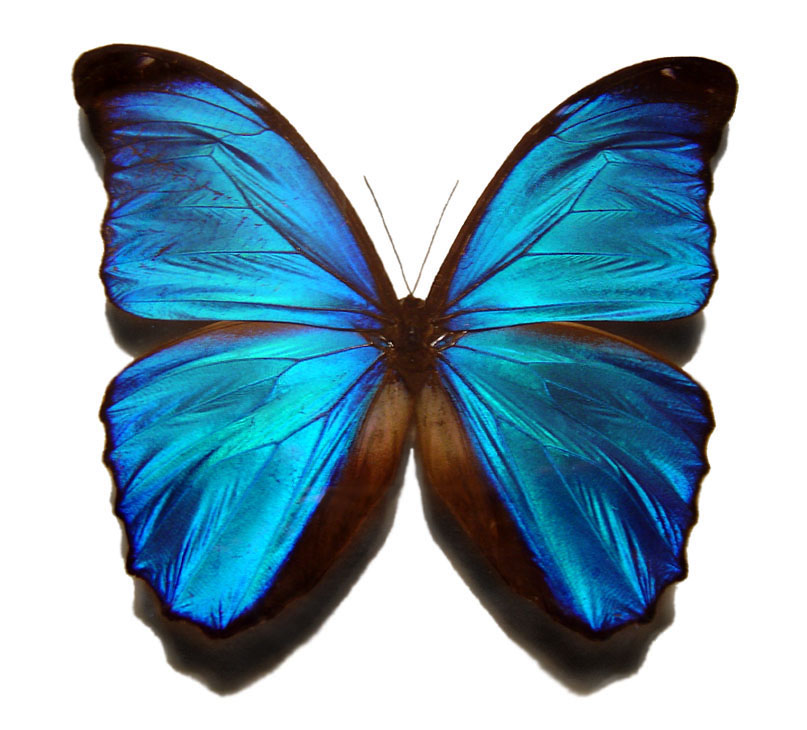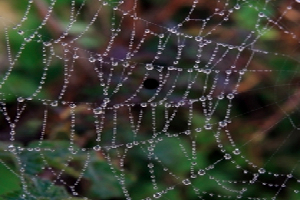Despite the buzz, actually designing and building things that are biomimetic is quite challenging. Stanford lecturer and designer Jeremy Faludi attests, “Most designers, engineers, architects, and other people who build things just don’t know that much about biology and the natural world, and when they do, there’s often a gap of capability in available materials manufacturing methods, and economic systems.” Even the most creative people can get stuck thinking along certain lines. Defining a design problem is challenging and finding strategies in nature that inspire solutions can be even trickier.
 Researchers study swarm behavior for more efficient computing.
Researchers study swarm behavior for more efficient computing.
A new interdisciplinary course at UC Berkeley, “How Would Nature Do That?”, tackles these challenges through project-based learning. Students from architecture, engineering, business, science, and design disciplines learn from each other and nature to implement innovative solutions to sustainable design challenges. By offering case studies of biomimicry, along with guest lectures and a series of design challenges, instructors Tom McKeag, Dr. Robert Full, and Dr. Lewis Feldman hope students will gain exposure to multiple methods for design.
Dr. Robert Full uses bio-inspired design and established the UCB Center for Interdisciplinary Bio-inspiration in Education and Research (CIBER).
A few weeks ago I visited the class, which is held at the Cal Design Space. Several student teams were previewing some of their ideas; one team was tasked with designing a sustainable humidity control system for a greenhouse. Discovering that the Hercules beetle changes color with changes in humidity, the team conceptualized a filtration membrane that activated upon sensing changes in color. In addition, I was delighted to hear renowned biomechanist Dr. Steven Vogel of Duke University give a presentation on his previous work. His talk inspired students to consider designing passive HVAC systems based on his observations of limpets, sand dollars, fish nostrils, rhododendrons, desert spiders and many other examples.
The course is sponsored by Qualcomm’s MEMS Technology Unit and is a joint effort of the College of Natural Resources, and the College of Letters & Science. Highlights from the course include guest lecturer Dr. Michael Weinstock from the Architectural Association of London and author of the “Architecture of Emergence,” as well as visits to the CIBER lab, tidepooling at Duxbury Reef in Bolinas and a field trip to Qualcomm in San Jose.
Biomimicry education can also be found in other sustainability courses and centers in the Bay Area. Cabrillo College’s sustainable cultures class all incorporate biomimicry principles into design thinking. The Monterey Bay Aquarium hosts the daily show ‘Whales to Windmills’: Inspiration from the Sea, a Biomimicry Institute production. Biomimicry curriculum produced by BioDream Machine teaches students at the Marine Science Institute in Redwood City to observe different adaptations and functions within San Francisco Bay marine life. Even the Cal Academy of Sciences devotes a website which introduces bio-inspired technologies.
 Qualcomm’s Mirasol display technology uses the same principle of light interference to produce color as does a butterfly wing.
Qualcomm’s Mirasol display technology uses the same principle of light interference to produce color as does a butterfly wing.
The Bay Area is also a hub for biomimicry technology. Moss Landing-based company, Calera, manufactures a concrete that sequesters CO2 by emulating sea coral. San Rafael’s PAX Scientific developed fluid-handling devices based on the efficiencies of natural fluid flow. And in Napa, Aquagy uses anaerobic digestion and microalgae to treat wastewater in a carbon-negative process.
With any new method of design comes rounds of trial and error. But that’s not stopping investors and researchers. JWT, a prominent marketing communications brand, announced that biomimicry is the #11 thing to watch in 2011. With its widespread recognition, biomimicry is certain to inspire real innovation to today’s design challenges.
37.8729046 -122.2480704
 Scientists are trying to mimic the ability of spiders to produce ultra-strong fibers without the use of heat or toxins.
Scientists are trying to mimic the ability of spiders to produce ultra-strong fibers without the use of heat or toxins.

